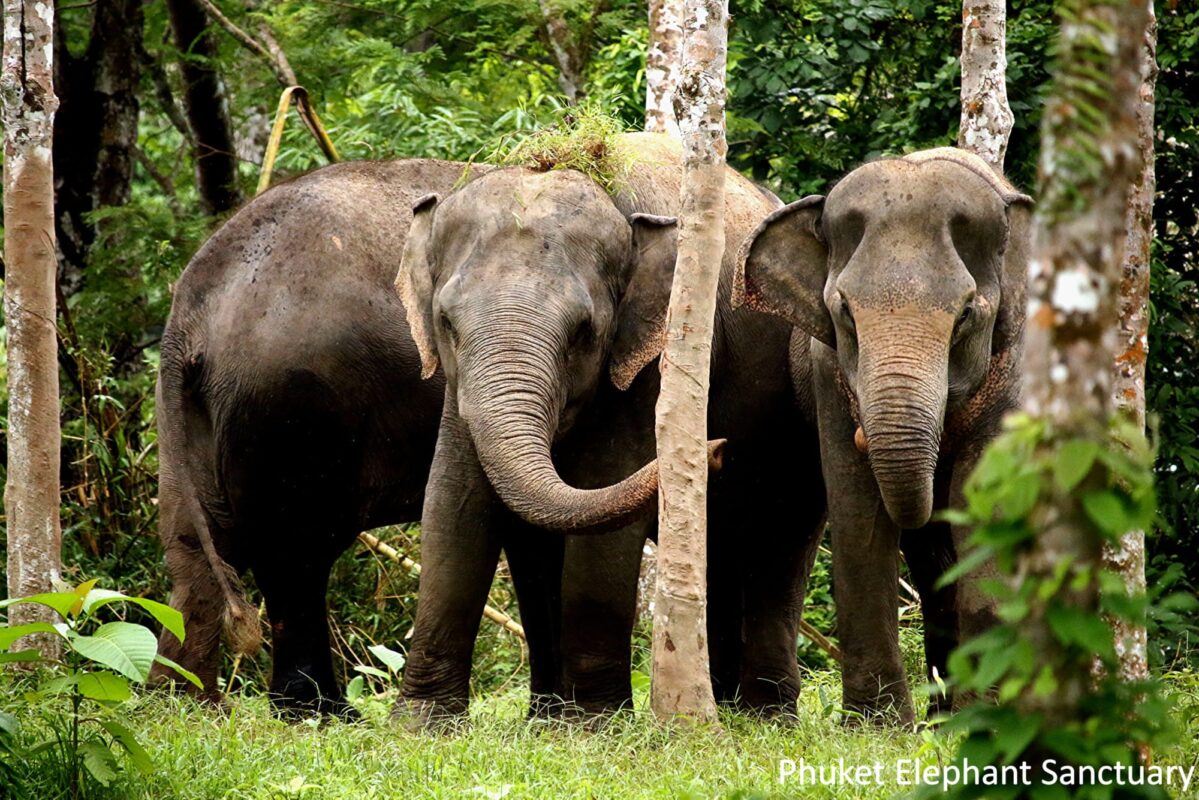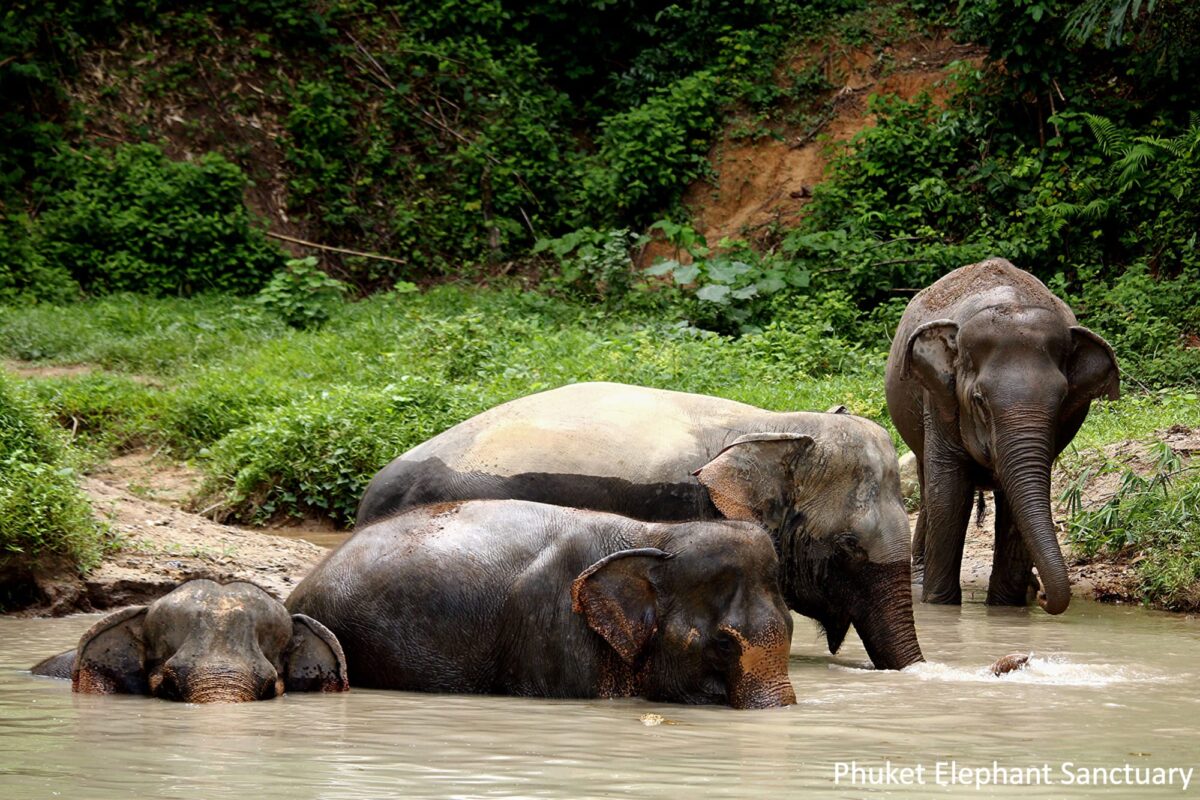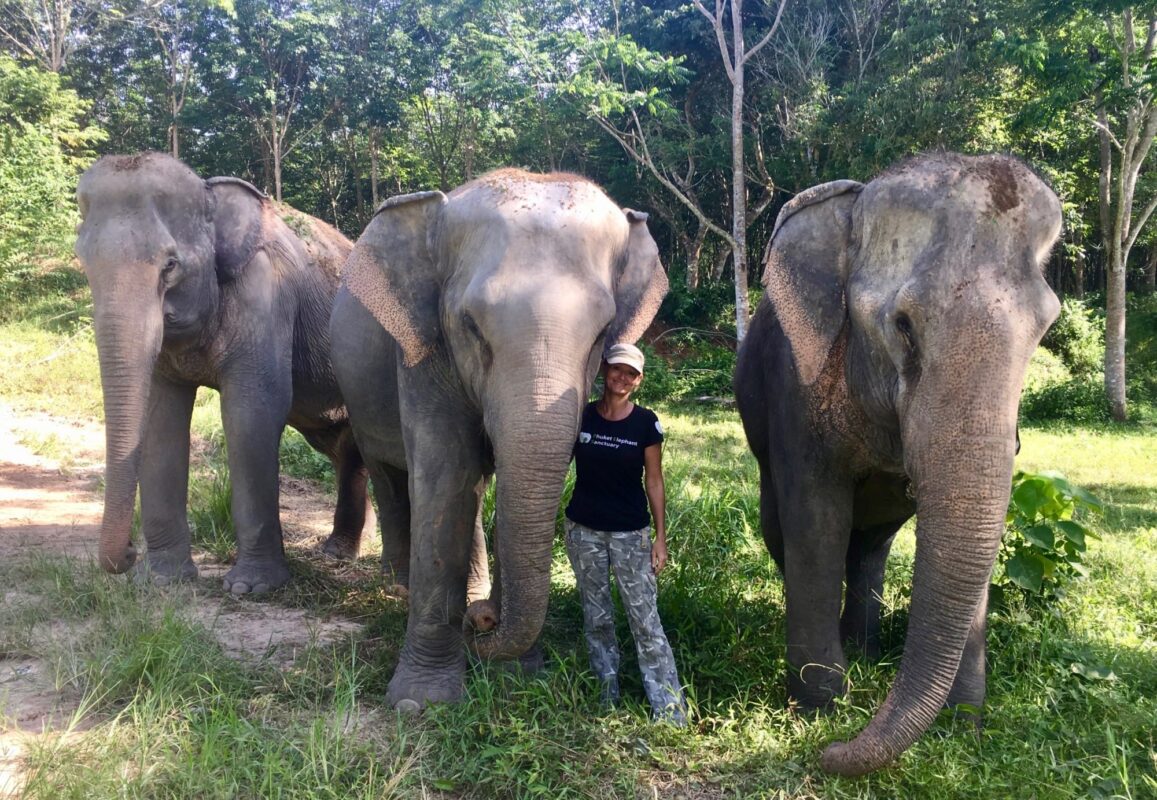What do Leonardo DiCaprio, Aaron Paul and members of Cold Play have in common? They have all visited the pioneers of ethical elephant tourism on Phuket Island in Thailand at the Phuket Elephant Sanctuary.
“Before we opened, there was nowhere on the island for old, sick, injured, tired or overworked elephants to go, no retirement home. They were worked until they died,” co-founder Louise Rogerson said, a former fashion industry executive from England and Hong Kong.
https://www.instagram.com/p/BSveffLFomx/
Now, elephants on Phuket, instead of being ridden by tourists or working for the logging industry, can come here and lead a more natural existence. Inspired by the pioneering work at Chiang Mai's Elephant Nature Park, in Thailand's north, these animals are considered retired. After visiting the Big Buddha and seeing the exhausted elephants tied to posts at the trekking camps, my husband and I decided we wanted a more ethical elephant interaction on our island holiday.
Because they been manhandled and mistreated their whole lives, interaction with elephants at Phuket Elephant Sanctuary is kept to a minimum. Guests get to feed the elephants fresh fruits and touch them once, and then the elephants lead the guests on an hour and a half hike through the thirty acres. "We want to give our elephants some dignity and allow them to be themselves in their natural habitat," explained Rogerson.
Enlarge

Russell Withers
Guests first meet the Phuket Elephant Sanctuary trucks at the Monkey Pod Café (delicious coffee and food; first-rate service) and are driven to the Sanctuary. As soon as you are on the bumpy dirt road, you see the elephants standing in the field and they are breathtaking in their size and grace.
Guests are greeted at the main shelter by half a dozen staff members in black Phuket Elephant Sanctuary shirts, provided a continental breakfast and then begin their morning tour watching an educational video about fascinating elephant facts with fun animation. For example, elephants live in matriarchal families and are capable of experiencing human-like behaviors such as teamwork, problem-solving, empathy and grief. An elephant’s 400-pound trunk is powerful enough to suck up 14 liters of water at a time.
Enlarge

Russell Withers
We also learned that you can tell the age of an elephant by looking at the shape of its head. The more pronounced the orbital bones on top and its “sunken cheeks”, the older it is.
Then a second video started that explains why a sanctuary for elephants is necessary. This video explained how elephants are taken from the wild and then used for tourism or logging. It showed the dark practice -- known as phajaan, or "crush" -- used to control the elephants.
Phajaan involves taking baby elephants from their mothers, who are often killed in the process. The calves are then trained to obey human commands, a process that involves subjecting them to confined spaces, beatings, sleep deprivation and hunger. The film also showed how elephant trainers use a sharp hook to stab the elephant into submission.
The end result is a docile and obedient animal, but also one whose spirit has been broken -- or crushed.
I cried through that part of the film and questioned how humans could be so cruel.
But then our guide brought back some lightness as she urged us to don our Wellie boots and to "Keep at least six meters away from the elephants and don't stand where they can't see you, it makes them nervous. And don't stand behind them either - they might fart in your face," our guide quipped.
The Wellies were to keep our feet dry as we tromped all over the sanctuary following the elephants as they stopped to take a mud bath, to eat some foliage and then to swim in the pond. Three canine companions traveled with our group of thirty people, including Panda who is best friends with the elephant Kannika and who followed the elephant to the sanctuary from the trekking camp where they both used to live.
Enlarge

Russell Withers
After spending time with the elephants in their natural habitats, we were escorted back to the main shelter and invited to partake in an abundance of vegetarian stir fries, curries and salads. I visited the make-shift shop for colorful cashmere pashminas and harem pants with an elephant theme, an environmentally friendly bag and hair accessories made from coconut shells.
The sanctuary doesn't see itself as being in competition with Phuket's tourist-oriented elephant camps. Rogerson said, "Our aim is to help all elephants, to encourage an ethical business model and hope that other camps will follow suit." In fact, Phuket Elephant Sanctuary was founded by Montri Todtane, a Phuket businessman and elephant trekking camp owner along with Lek Chailert world-renowned elephant rescuer and conservationist and founder of Save Elephant Foundation and Rogerson, who started working with animal charities while running her clothing label Mandarin Orange.
Phuket Elephant Sanctuary buys elephants in order to help them retire. We visited a second day and Rogerson and her partner Russell took us on a private tour of the elephant’s night sanctuaries and their construction projects, where they were building more night sanctuaries for the next group of four incoming elephants, arriving in June and July 2017.
Tags
#elephants / #ethicaltourism / Aaron Paul / Coldplay / Leonardo DiCaprio / Phuket / Thailand / Travel
#elephants / #ethicaltourism / Aaron Paul / Coldplay / Leonardo DiCaprio / Phuket / Thailand / Travel

